March 15, 2023
Artist to Watch
LINDA CUMMINGS

NB: Linda, when did you first pick up a camera and what drew you to become an artist?
LC: Growing up, my father’s Zeiss Ikon rangefinder was always nearby. He carefully composed the photos of my childhood, and that of my 6 younger brothers and sisters, in ways that gave the appearance of happiness and harmony that were far different from my experience. When I set off for college he loaned me his camera and I took it with the determination to discover the world through my eyes. It’s ironic that the same camera my father used to cover up the messiness, the cruelty and contradictions in our family is the same one that allowed me to disarm and reveal. With a bus ticket from my grandparents and a scholarship I won to the Cleveland Institute of Art I began my new life in search of a community of people like me, with questions like mine. I went to study painting but was met with a very antiquated view from many (mostly male) professors that would often dismiss female students. I noticed an inverse relationship between the number of female students entering school and those graduating, so I went to the Director and suggested they add more female faculty. Instead, they rescinded my scholarship the following semester, so with the encouragement of my friend, April Gornick, who left CIA the year before to go to Nova Scotia College of Art and Design, I finished art school in Halifax, Nova Scotia. There I found a thriving avant-garde community of conceptual artists – Laurie Anderson, Martha Wilson, Katherine Knight, June Leaf and Robert Frank. I flourished there in its progressive, vibrant intellectual community, beside the open sea. It opened my eyes to performance art, art on the move.
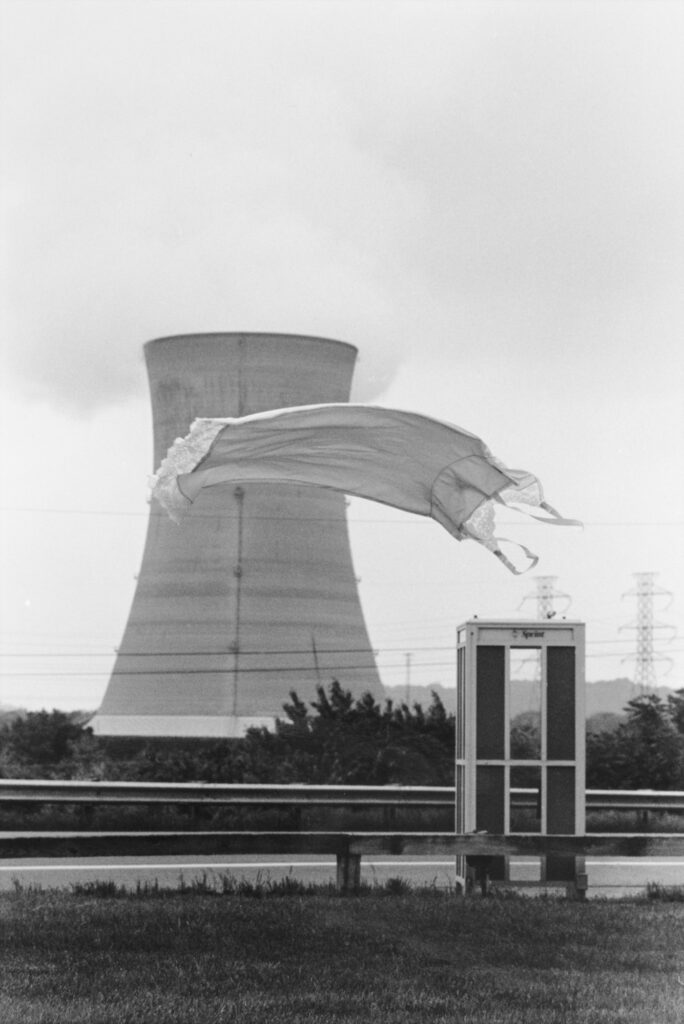
NB: So at this time you’re studying painting, how did you come to integrate the performance aspect into your practice?
LC: In Halifax I began making cameras of my own: I made “pin-hole pigeon cameras” inspired from World War II spy cameras, when pigeons would fly over enemy lines with tiny cameras attached to them. I made a flock of seven pinhole pigeon cameras, each one with a string attached to open its shutter. I’d sit on the bench at a public park, waiting for live pigeons to interact with my decoy pigeons and then make a “pigeon pinhole” picture of the interplay. Performing my artwork in public gave me a place for my work to be seen and so art-making in the open became my conduit. My first artwork purchased by a museum was a silver gelatin pigeon photograph acquired by the Lehigh University Art Gallery in 1979.
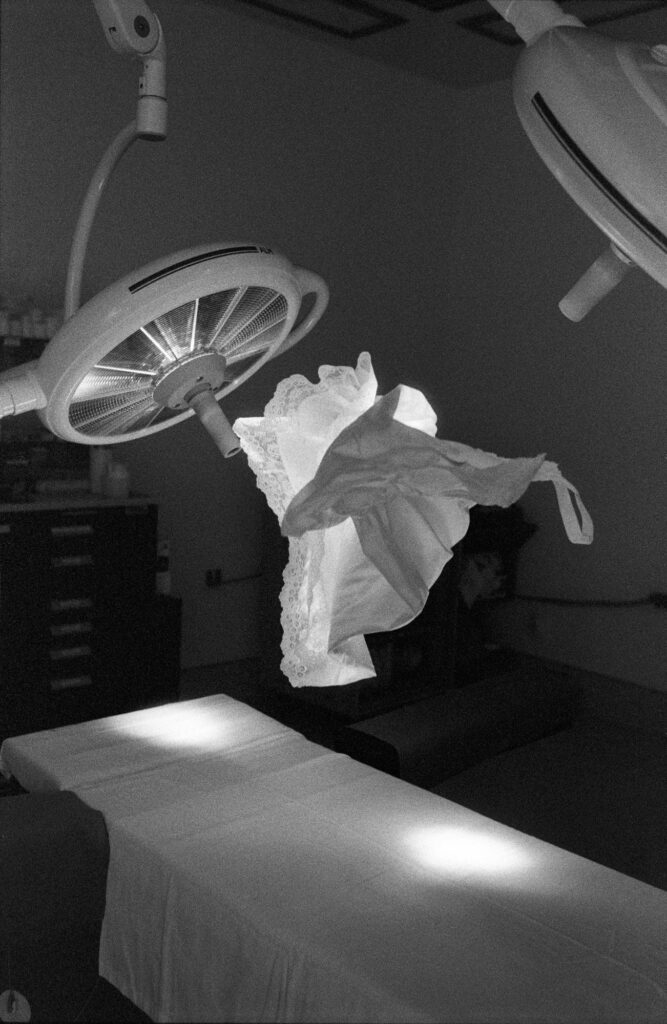
Project: Slippages (1992-2022)
NB: Your work is characterized by working in series. What is the process to help you determine each of these new series? How do you know the beginning and the end?
LC: When I start a project, I have mulled it over for quite a while. Once I find the materials that speak to, or reveal the idea, the process accelerates and becomes more organic and intuitive, but I always return to a conceptual basis. An artist gathers lots of impressions, whether in photographs, drawings, writings or sound scores, but knowing which one to save and follow, and which one to let go is the hardest part. Looking back now I see a recurring fascination in my artwork about the interplay of visible and invisible forces shape our lives. I think this goes back to my initial pigeon premise, the idea of the co-creation of the image by both subject and object, like the Heisenberg Principle that the act of observation changes the thing being observed. The end of a series is kind of an illusion. There really is no end, just a transformation in material or technique or subject matter. I mostly wait for something in the work to announce its own completion.
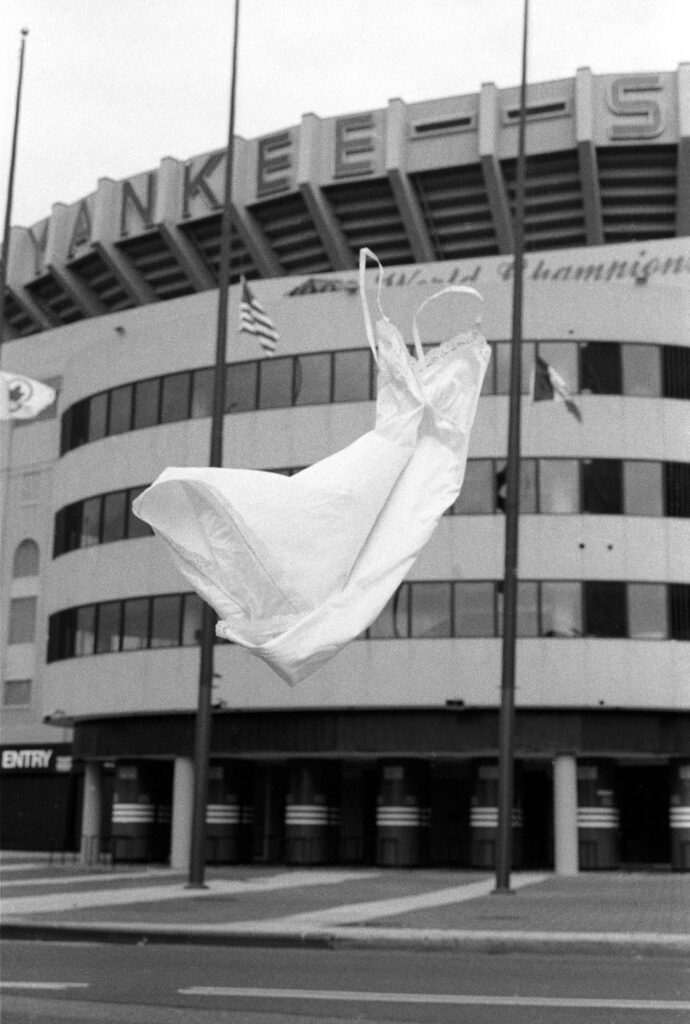
NB: Your current exhibition Slippages at 89 Greene was initially developed over a span of 10 years (1992 – 2002). Can you tell us a bit more about revisiting this body of work 20 years later and how has the work evolved over time?
LC: Slippages is a project that comes out of a desire to literally transcend the gravity of the past and reclaim what may have been left out, or invisible. Over time, though, I realized that what began as an attempt to picture hidden power dynamics of gender, was evolving into picturing the changing dynamics of power itself. A radical new invisible technology was simultaneously reshaping our landscape and lives. At the end of the millenia, once secure infrastructure and systems of knowledge based in the physical world began morphing and disappearing into a digital reality. I witnessed previously defined hallmarks of society, architecture and tradition begin to crumble and couldn’t help seeing the shifts in the social, cultural, economic and personal domain as inter-related to our increasing digital dependence.
For Slippages I found objects and sites that held cultural significance, and had power and history embedded in them. The garments I chose, seven slips, held powerful memories and associations. The slip was not only a uniform of gender, but also a potent word – both noun and verb – that resonated with the actual power slippages I saw happening in the world. Although the slip was a constant feature in the photographs, my initial subject of identity and resistance had transformed into a meditation on change itself – another invisible force, like the wind – that can be seen by virtue of its impact on the visible world and physical beings.
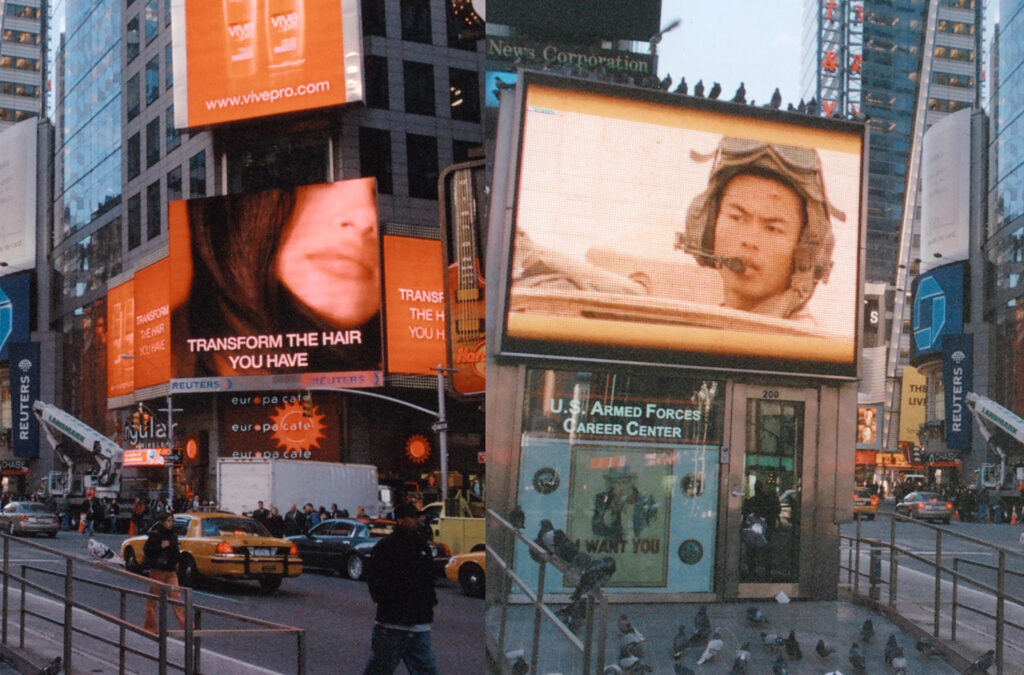
NB: So there’s this aspect of atemporality in your work and a sense of movement, do you want to just expand on that a little bit?
LC: I like to make artworks that tap into a sense of on-going being, an organic flow of time and process. Susan Sontag says “…There is no final photograph…” because the desire to look and to see and to learn is endless. Art and tradition transcend time, I think, because they spring from a human need to connect, to make meaning and to feel safe. Unconscious processes and unresolved conflicts, like wars, transcend time. They keep on going. Isn’t this why, 50 years after Roe v. Wade, we are coming back to the same question of who’s in control of the female body, even though we all thought it was settled law? Whose interpretation counts? We have differing interpretations and perspectives on events because we all see them through the filters of our own time and place. I search for a moment of recognition where reality and my imagination meet. It is at this moment, this intersection of inside and outside, the convergence of now and then, that I click the shutter and the photograph begins.
There was a project I did for four years, from 2004 to 2008, where I stood as a silent sentinel during the Iraq war in the same spot in front of the U.S. Army recruiting station at Times Square. There I made pictures of young men and women going through the doors to enlist. In the frame was also the war of words and images – glaring screens and billboards of military and commerce competing for attention from passers by. I took 24 frames within 24 minutes to underline the phenomenon of the persistence of vision and to reference the way cinema and news media construct their narratives. Afterwards I pieced frames together in photographic scrolls so the viewer could slow down and digest these different impulses and images screaming at each other.
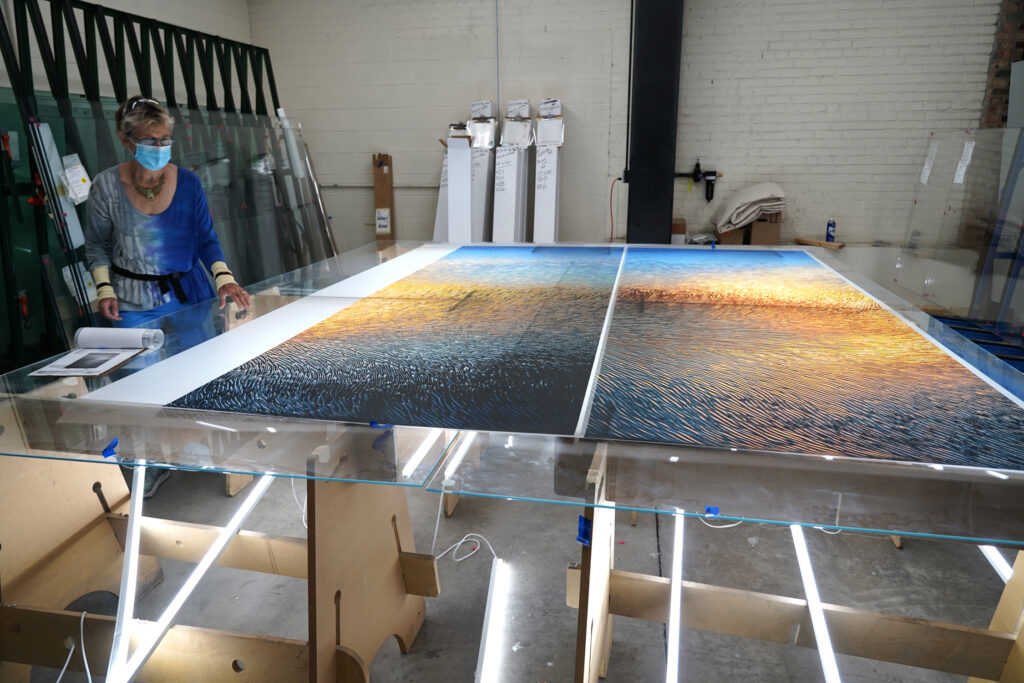
NB: Amazing. Do you have any other upcoming projects or exhibitions that you would like to share with us?
LC: Yes, on view through March 25th is Slippages at 89 Greene, the project space for Signs and Symbols Gallery in the Lower East Side. And I am excited to be working on a large project titled Genesis 1.2 – a large 10-foot x 7-foot photographic glass artwork to be installed in June 2023 as a permanent installation in Temple Beth Tikvah in Madison, Connecticut. This project engages two passions of mine: understanding properties of light and advocating for the health of water bodies, rivers and estuaries that feed into Long Island Sound. It’s an artwork that was created in a collaborative spirit with members of the community. The guiding premise for the Ark given to me by the Rabbi was Genesis 1:1-5 and the birth of light from darkness, with the spirit of God hovering on the face of the waters. On the first morning of Hanukkah I captured a spectacular sunrise through a glass device I constructed to distort and expand the light rays, separating them into a shimmering spiral of color and transparency. The effect is iridescent, like an impressionist painting. I am constructing a physical space in a sanctuary, creating a stage within which to present an artwork intended to uplift the viewer, metaphorically, into a state of reverie, awe, and inspiration.

